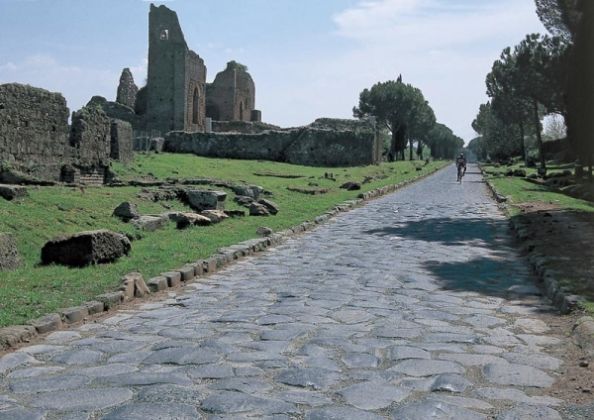Parco dell'Appia Antica
This wedge-shaped piece of land that reaches all the way to Rome’s centre is like a doorstop, holding open the entrance to all that is the Eternal City. Parco dell’Appia Antica stretches over an impressive 3,400 hectares, and encompasses the rural estates Tormarancia and Farnesiana, Tor Fiscale’s green area, the Caffarella valley and 16 km of the ancient consular road, not to mention various natural and man-made attractions.
Protected since 1988, the park's varied topography from flat plateaus to rippled hills was moulded by the Capo Bove lava flow and refined by severe weather. Its location adjacent to the Alban Hills makes it a biological hub and a great place for nature lovers to observe numerous species of plants and animals. The park is closed to private traffic on Sundays and holidays, which encourages the natural to thrive.
However just because motorised traffic is restricted that doesn’t mean there is a shortage of places to go or things to see. You can swap your car for a new pair of wheels and explore the park on one of its five bicycle tours. Varying from beginner to advanced and ranging from 1-2 hour rides, bikers can choose between the Caffarella valley trail for a nature tour, the Porta S. Sebastiano, Cecilia Metella and Circo di Massenzio tour for a sampling of monuments, the aqueducts trail, the Tormarancia Estate nature trail, and a ride up Via Appia Antica to the Grande Raccordo Anulare ringroad. Six walks along similar routes are also offered and allow visitors to take in the scenery at a slower pace.
Some other places of interest are the Museo delle Mura, the Church of S. Urbano, the Basilica of St Sebastian and its catacombs, the St Callixtus catacombs, the Circus and Villa of Maxentius, the Mausoleum of Romulus, the Caetani Castle, and the Villa Quintili and aqueduct, just to name a few.
The park derives its name from the consul Appius Claudius Caecus who bestowed his name on the new road that reached Campania in 312 BC. The road, built by laying a bed of gravel topped by large flat stones, provided a solution for water drainage and made smooth travel possible. Recognised for its ingenious design, it earned the epithet “Regina Viarum” meaning “the queen of roads.” The road that led people of the past to and from Rome now serves to guide visitors through the history of the city.
General Info
View on Map
Parco dell'Appia Antica
Parco Regionale Appia Antica, Via Appia Antica, 42




















